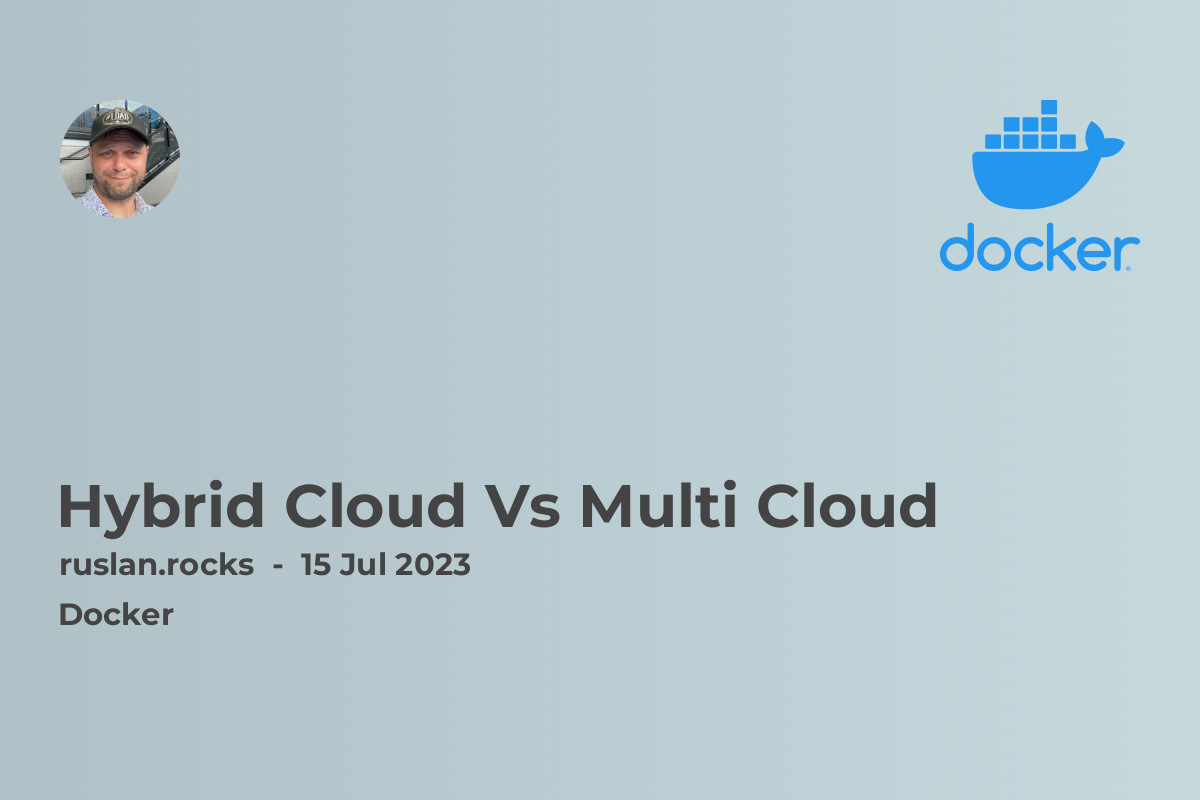
When it comes to cloud computing, businesses have multiple options to choose from. Two popular models are hybrid cloud and multi cloud. While both options offer their own advantages and disadvantages, they differ in terms of architecture, flexibility, and management. In this article, I will explore the differences between hybrid cloud and multi cloud, and determine which option is best suited for different business requirements.
Hybrid Cloud
The hybrid cloud is a combination of public and private clouds, allowing businesses to take advantage of both environments. It provides the flexibility and scalability of the public cloud, along with the security and control of the private cloud. With hybrid cloud, organizations can store critical data on-premises, while also leveraging the public cloud for non-sensitive applications.
A major advantage of the hybrid cloud is its ability to handle fluctuating workloads. During periods of high demand, businesses can scale their operations in the public cloud, while keeping sensitive data secure on their private servers. This allows organizations to optimize their resource allocation and reduce costs.
However, managing a hybrid cloud environment can be complex. It requires careful coordination between the public and private cloud providers, as well as efficient data integration and management. Additionally, security measures need to be implemented to protect sensitive information in both environments.
Multi Cloud
Multi cloud, on the other hand, refers to the use of multiple public clouds from different providers. With a multi cloud strategy, businesses can avoid vendor lock-in and take advantage of the unique offerings of different cloud providers. This flexibility allows organizations to choose the most suitable platform for each specific application or workload.
The key benefit of a multi cloud approach is redundancy and resilience. By spreading workloads across multiple cloud platforms, businesses can mitigate the risk of downtime or service disruptions. In the event that one provider experiences issues, applications and data can easily be moved to another provider, ensuring continuous operation.
However, managing multiple cloud providers can be challenging. Each provider may have its own set of tools, APIs, and management interfaces, requiring additional time and resources to coordinate and maintain. Additionally, data integration and security across multiple clouds can be more complex compared to a single cloud environment.
Choosing the Right Model
The decision to adopt either a hybrid cloud or multi cloud model depends on the specific requirements and objectives of the business. Here are a few considerations to help make the right choice:
-
Workload Flexibility: If your organization has varying workload demands and requires a mix of public and private resources, hybrid cloud might be the best fit.
-
Vendor Independence: If you want to avoid vendor lock-in and have the flexibility to choose the best services from different providers, a multi cloud strategy would be more suitable.
-
Cost Optimization: If cost savings are a priority and your organization can benefit from leveraging public cloud resources for non-sensitive applications while keeping critical data on-premises, hybrid cloud may be the preferred option.
-
Resilience and Redundancy: If maximizing uptime and ensuring continuous operation are critical, a multi cloud approach can provide the necessary redundancy and resilience.
-
Management Complexity: Consider the level of management complexity your organization is willing to handle. Hybrid cloud environments generally require more coordination and security measures between public and private clouds, while multi cloud environments involve managing multiple providers.
In conclusion, both hybrid cloud and multi cloud have unique strengths and weaknesses. Organizations need to carefully evaluate their requirements and prioritize their goals to determine which model aligns best with their business objectives.
Related Topics
- Cloud Computing Future Of Infrastructure: Learn more about the future of cloud computing and its impact on infrastructure.
- Infrastructure As Code: Explore the concept of Infrastructure as Code and its benefits for managing cloud infrastructure.
- DevOps Practices: Discover the best practices for implementing DevOps in cloud environments.
- Continuous Integration And Deployment: Understand how continuous integration and deployment can streamline cloud-based development processes.
- Monitoring And Alerting: Learn about the importance of monitoring and alerting in cloud environments to ensure optimal performance and reliability.
In the rapidly evolving landscape of cloud computing, businesses have multiple options to consider. Hybrid cloud and multi cloud are two prominent models that offer distinct advantages and disadvantages. By understanding the differences between these models and considering their specific business requirements, organizations can make informed decisions on which approach is most suitable for their needs.
